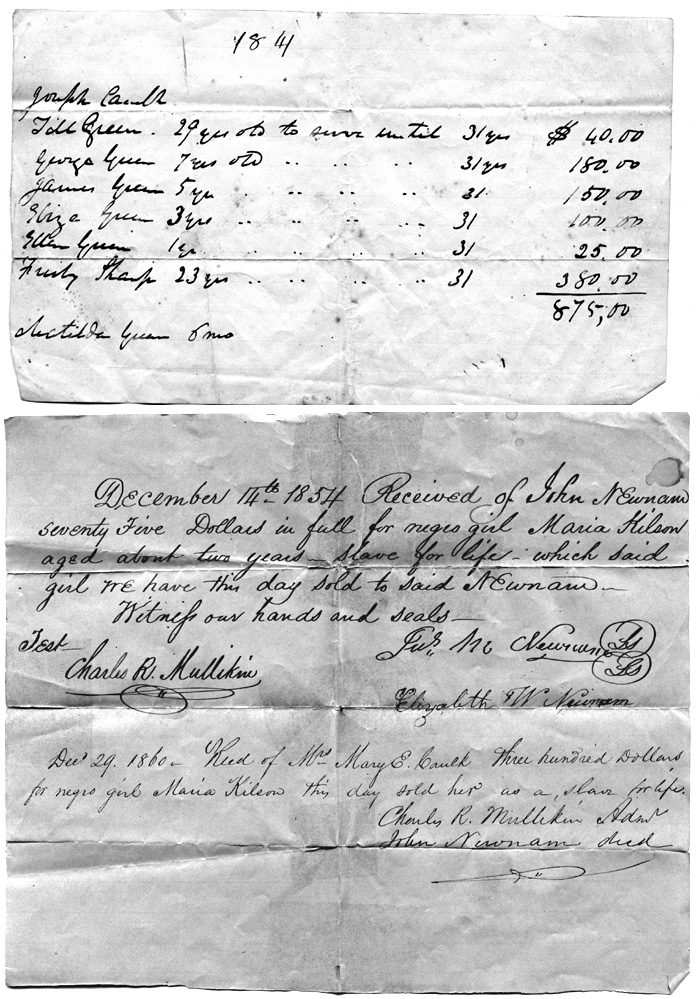 TWO TRAPPE AREA SLAVE DOCUMENTS Documents from the Caulk family papers. They lived at Isle of Rays Farm (now Roslyn farm) Island Creek Neck. Slavery existed in the Trappe area almost from the beginning. Sometimes slave families were kept together and sometimes they weren't. Trappe area slave holders comforted themselves that they treated their slaves better than those in other areas. Whether this was true or not, it also served as a threat that disobedient slaves would be sold down south. Into the 19th century, it became more and more the practice that slaves would be released from bondage at age 31. This might not be as altruistic as it seems given the shorter life spans then. At age 31, most slaves were past their working prime and so there was a law that slaves kept in Maryland until their mid thirties had to be kept, and cared for, for the rest of their lives. Not that there weren't ways around that- selling them out of state for one thing. This act may have even soothed the consciousness of some slave holders not to mention their pocketbooks. Although the life of Free Blacks might in some ways be worse than that of slaves (not only were Free Blacks still exploited and had no rights, but they also had to fend for themselves), it was certainly better to be free than be someone's property. Fortunately Martha Kilson would only remain in slavery for a few more years. Because Maryland was a border state and never joined the Confederacy, Lincoln's 1863 Emancipation Proclamation did not apply. Maryland slaves were not freed until 1866. Children of free blacks would themselves be free and by the outbreak of the Civil War, the population of free blacks nearly outnumbered the slaves. Some slaves escaped to fight in the Union army. African Americans sometimes took the last names of their owners or former owners It should also be said that there was some antislavery sentiment in the area among the Quakers and the Methodists. |